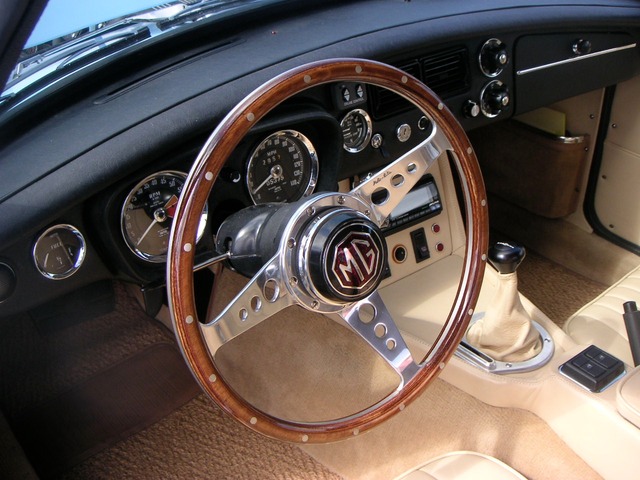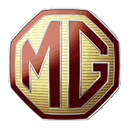
We wanted a metal dash, so we changed the lower windscreen panel to one from a '67 car in order to accept the earlier dash panel.
Note the rare 140 MPH speedo. The shifter is a Lokar unit and the trim ring holds the display for gear selection. If you look closely, you will see the edge of the tweeter mounted to the left of the fuel gauge where the O/D switch would have been. It mate sits to the right of the glovebox, instead of the map light. The silver trim ring makes the speakers blend in to the point where they almost disappear.
Controls for the cruise control sit above the oil/temp gauge and the round knob at the right end of the switches controls the 4-speed heater fan. The original heater controls were just too far away to be fiddling with in the dark so they were replaced with units from a '73 B. Now they have illuminated faces and little light dots on the knobs to make night time operation that much simpler.
The leather-covered center console adds quite a lot of comfort. Home-market cars kept the same metal dash all the way up to '74, though their consoles continued to evolve beyond the simple plastic panel that out metal-dashed cars had. This one is a one-piece unit made by MGOC and covered in the same trim shop that did the seats. The console hold the new map light, Hazard switch, heated rear defroster control and the seat heater controls. The stereo has a tilt-up face to improve visibility. The red lamps are warning lights for the fuel injection.
We felt that the ashtray was the perfect spot to mount the controls for the power windows.
The steering wheel is a Moto-Lita and the horn push is a special to both fit the hub and employ the factory center.
You can also see how nicely the Coco Mats fit.
